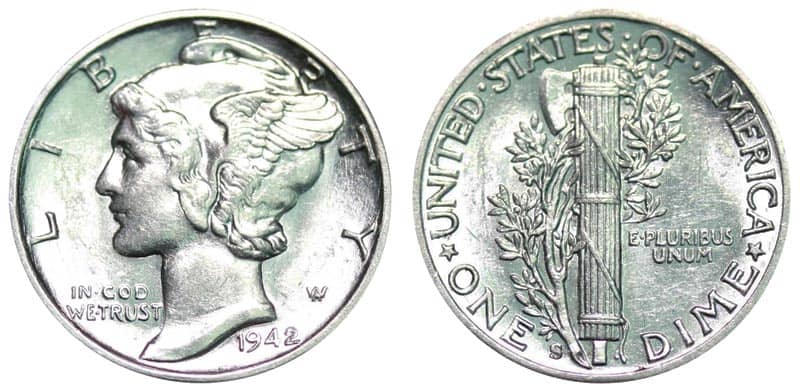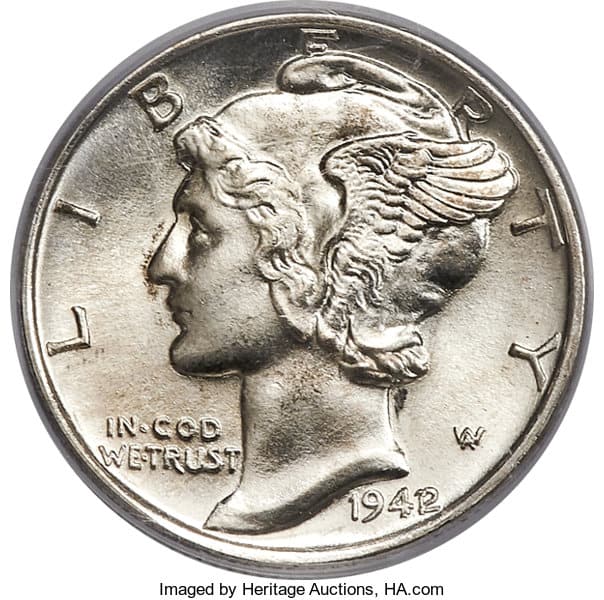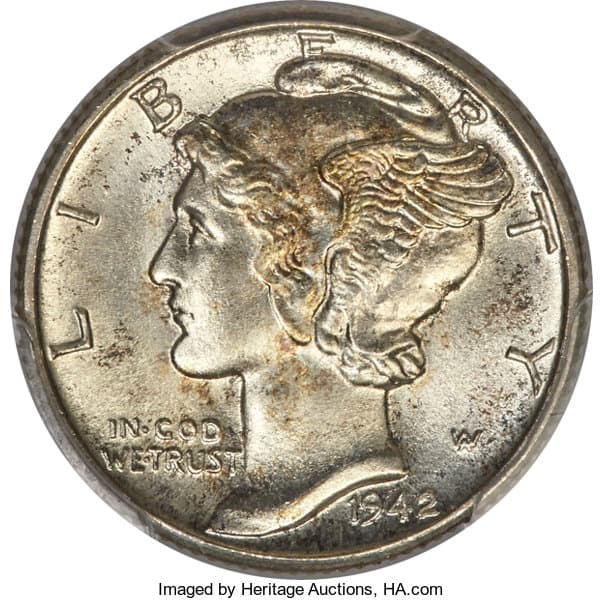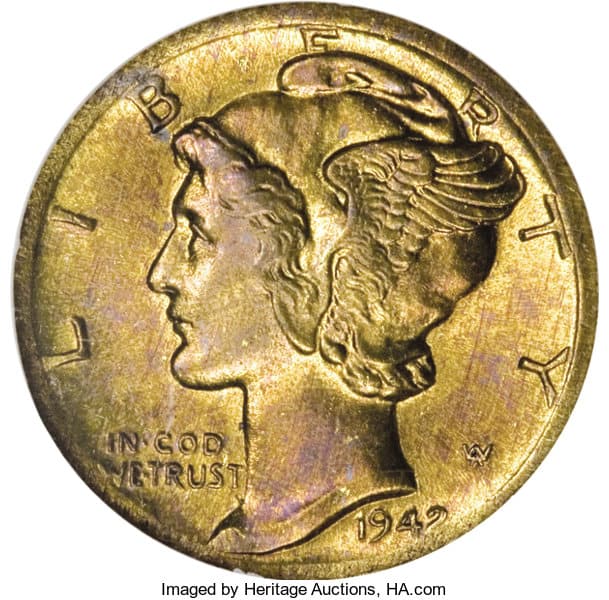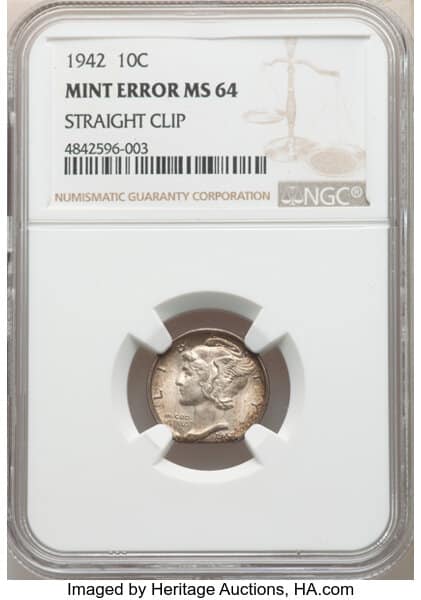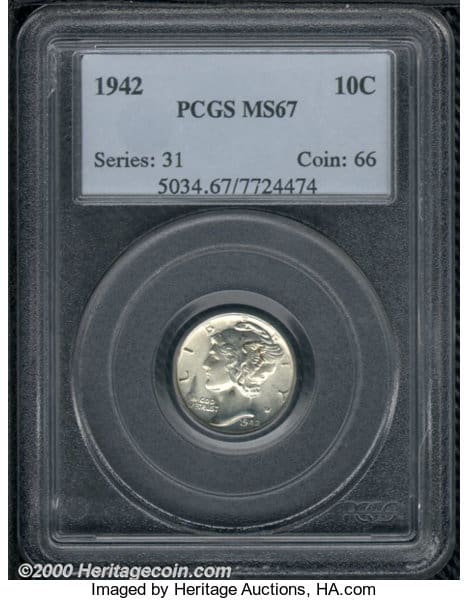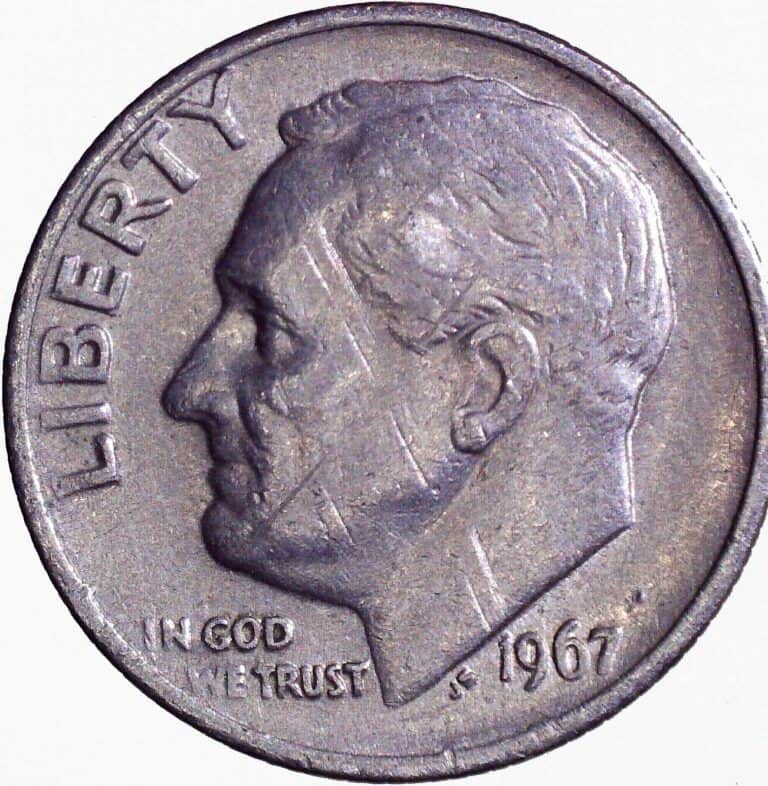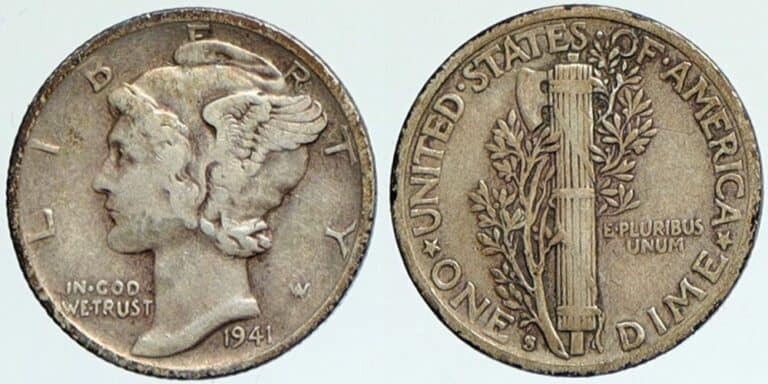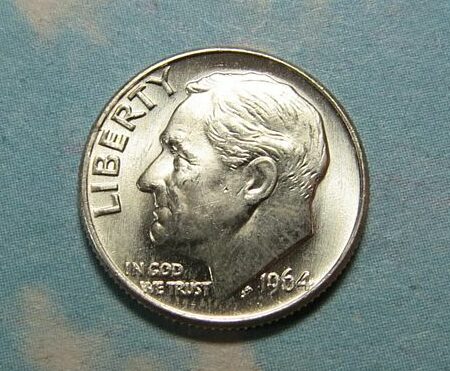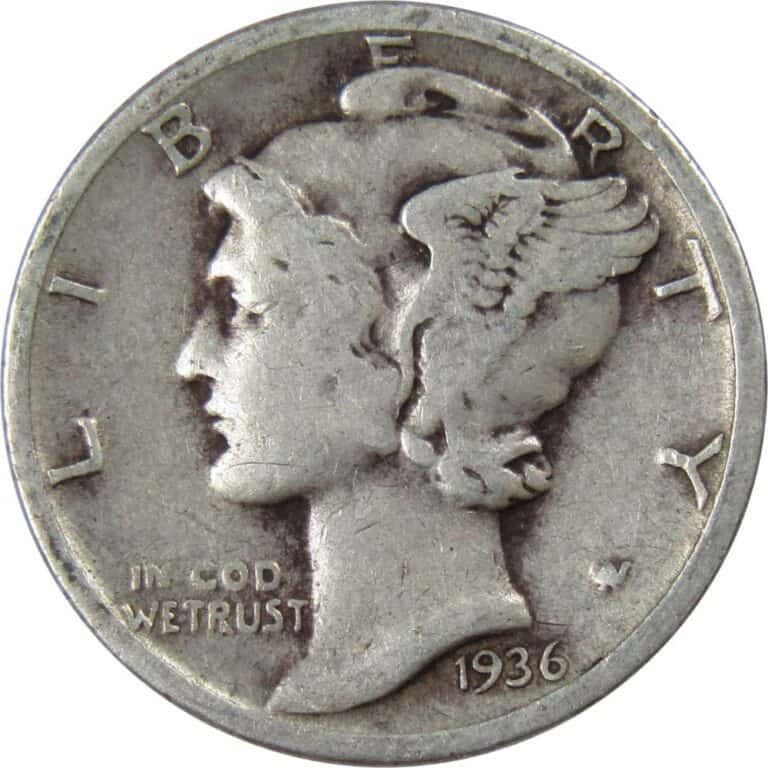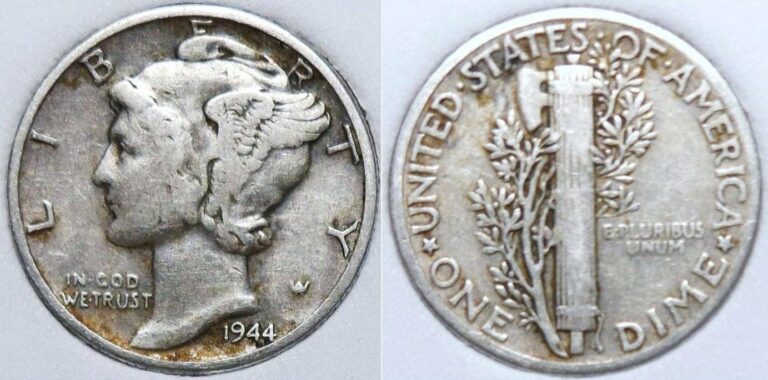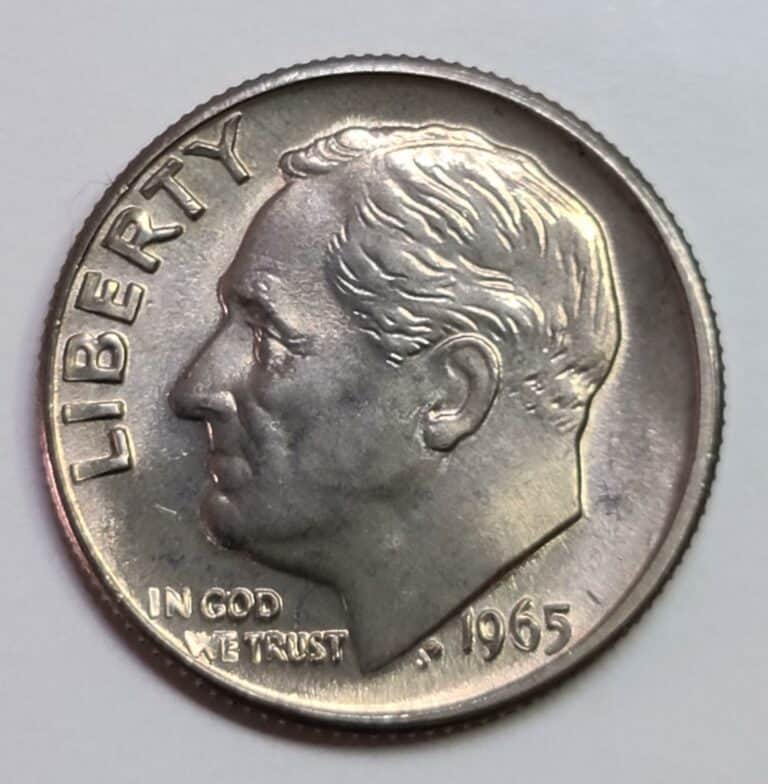1942 Dime Value: How Much Is It Worth Today?

With multiple record-breaking auction sales, the 1942 dime is often considered one of the most valuable coins in US history. Despite its face value of just 10 cents, unique coins have sold for up to $120,000.
As part of the famous Mercury dime series, these coins are an incredibly popular find and will almost always sell for much more than their face value.
So if you have a 1942 dime in your pocket, you might want to look at it closer to ensure you’re not about to spend a hidden gem!
This article will explain everything about the 1942 dime value. From the different variations and highly-valuable errors, we’ll help you see if your dime is a small treasure or a priceless artifact!
1942 Dime Value chart |
||||
| Mint Mark | Good
(G-4) |
Extremely Fine | Uncirculated
(MS-65) |
Uncirculated
(MS-67)
|
| 1942 No Mint Dime Value | $2.66 | $4.27 | $36 | Up to $15,275 |
| 1942 D Dime Value | $2.66 | $4.27 | $32 | Up to $1,920 |
| 1942 S Dime Value | $2.66 | $4.27 | $36 | Up to $14,750 |
| 1942/1 No Mint Dime Error Value | $352 | $739 | $17,469 | Up to $120,000 |
| 1942/1 D Dime Error Value | $352 | $674 | $11,357 | Up to $72,000 |
1942 No Mint Dime Value
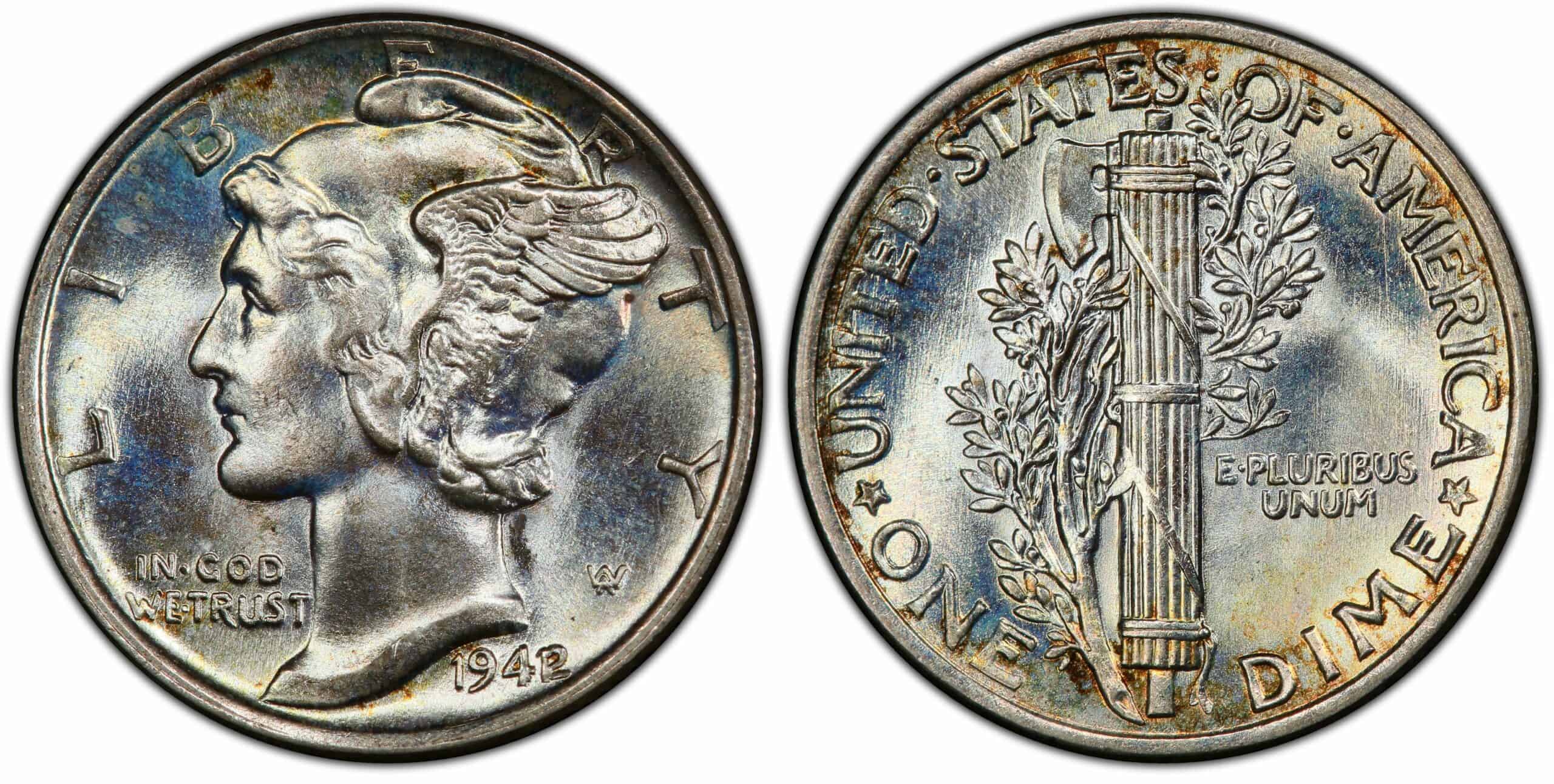
With over 205,432,329 dimes struck, Philadelphia made the most dimes in 1942. As was the norm for the mint, no mint marks are present on coins, making them relatively easy to identify.
German-born sculptor Adolph Weinman designed both sides of the coin. The obverse depicts a profile portrait of a young “Liberty,” a common symbol of Western freedom and independence. Weinman’s neighbor, Elsie Stevens, is often thought of as the inspiration behind Liberty’s beautiful appearance.
The reverse depicts fasces (bundle of rods), with an olive branch symbolizing America’s readiness for war but also with a desire for peace. The reverse featured the text “United States of America,” “One Dime,” and the motto “E Pluribus Unum” (Out of many, one).
Though officially known as Winged Liberty dimes, the series is often called ‘Mercury dimes’ because the US press initially misattributed the design to the Roman god, Mercury. The nickname has stuck ever since.
Throughout its production run, the dimes proved immensely popular with the American people, who thought the designs were patriotic and attractive. They remained in constant production until 1945 when the death of President Franklin Roosevelt inspired a redesign to honor him. The Winged Liberty series was then retired.
The 1942 no mint dime comprised 90% silver and 10% copper. It has a higher melt value than the coin’s actual face value, averaging about $1.70. Because of the high silver used, dimes had reeded edges, making counterfeiting the coin more difficult.
As the mint in Philadelphia produced the most dimes in 1942, they were the most plentiful coin in circulation. Coins in average condition can still fetch between $2 to $36, which is well above the coin’s face and melt value.
1942 no mint dimes in mint condition are scarce. The highest recorded sale for a regular strike coin was an impressive $4,800 in 2019. This high premium was because the coin was in impeccable condition, with beautiful lemon-gold and green toning on the obverse.
But the real value in the 1942 no mint dime is if the coin has a “full band’’, a unique grading system for Mercury dimes. This feature describes a coin with a solid, precise strike on its reverse side. 1942 no mint dime sold for an unprecedented $15,275 in 2019 because of its full band status.
1942 D Dime Value
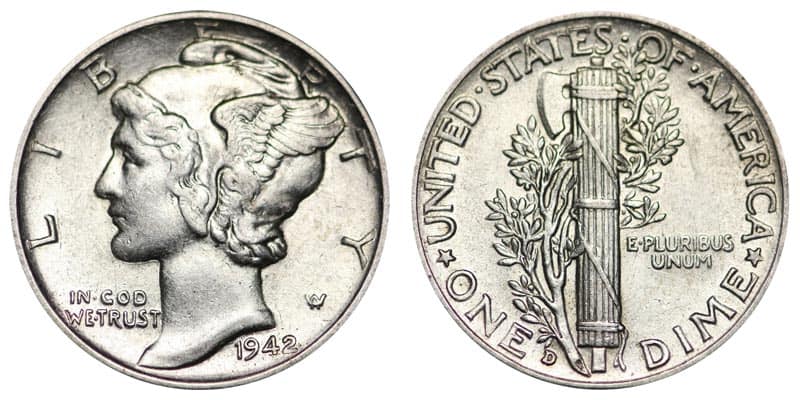
The Denver mint produced about 60,740,000 dime coins in 1942. You can quickly identify these coins by their signature ‘D’ mint mark on the reverse side.
Like the no mint variety, the 1942 D dime comprised 90% silver and 10% copper, had reeded edges, and featured the same iconic design by Weinman.
Despite having a significantly lower production number, 1942 D Dimes are worth a similar amount to the no mint variation, averaging between $2 to $32 in average or fine condition.
This lower-than-expected value may result from a popular error from the Denver mint, considered the most valuable dime coin. As a result, Denver dimes which are error-free, do surprisingly poorly in auctions. Despite the coin’s impeccable condition, one of the highest recorded sales only reached $632.50.
Again, if the coin has a full band appearance, it will undoubtedly be more valuable. The highest recorded sale for a 1942 D Dime with a full band was $1,920.
1942 S Dime Value
With just 49,300,000 dimes minted, San Francisco produced the least amount of 1942 dimes. You can quickly identify these coins by their clear ‘S’ mint mark on the reverse side.
Like the coins made from Denver, 1942 S Dimes are often eclipsed by much rarer error coins and will generally sell for between $2 to $36 in average condition. But like all collectibles, a well-preserved coin can still surprise you at auction.
The highest priced S Dime with regular strike sold for a sizeable $1,035 back in 2006. However, if your S Dime has a full band strike, its price can skyrocket. This coin, sold in 2014, sold for an incredible $14,750 because very few full band coins survive in as well a condition.
1942/1 No Mint Dime Error Value
Easily the most valuable edition of the 1942 Dime results from a widespread overdate error, which saw 1942 re-struck over the previous year, creating a unique appearance where the number 1 is visible beside the number 2.
Struck in Philadelphia and Denver, these dimes have broken numerous records at auction. Unfortunately, there is no record of how many of these dimes were made with this error; each time these coins appear at auction, it attracts worldwide attention.
According to coin auction site PCGS, the highest selling 1942/1 no mint Dime with an overdate error sold for an extraordinary $120,000 in 2018. The coin had a brilliant surface with radiant frost wash, and its quality was described as “unimaginable.”
But because of these incredibly high sales, counterfeits of the 1942/1 dime are becoming quite widespread, and many grading sites warn members of the public to be cautious. Standard features of a forged 1942/1 dime include oddly-defined lettering, the wrong mint mark used, weird typefaces used, and the incorrect angle of the date in question.
1942/1 D Dime Error Value
The Denver mint also produced this overdate error, though it was only discovered in 1960. Since then, collectors have been keen to find more of these dimes with the Denver mint mark.
Because of its significantly lower production record, there are arguably fewer 1942/1 D Dimes. We can only assume they form part of the 49 million dimes made there in 1942.
These coins are considered incredibly valuable in any condition, though there isn’t as much data from auction sites to say for sure how consistent they can sell for.
Per the auction site, PCGS, Good, or Fine graded coins can fetch between $1,000 and $12,600. Even coins with a mint grade of below 20 (which is usually considered relatively poor) can sell for over $400.
But the true potential of the 1942/1 D dime is if it’s in high to-mint condition. One of the highest recorded sales for this kind of dime was in 2019, for up to $72,000. The coin is known for its unmatched preservation and sharp design elements.
1942 Dime grading
Because of its potential value, especially with errors present, it’s highly recommended that you properly grade your 1942. The most common scale used is the Sheldon coin grading system, a 70-point scale that factors in coin condition, luster, detail, and more.
The video below explains how to grade Mercury coins like the 1942 dime:
Rare 1942 Dime Error List
As we know, well-known errors on the 1942 dime can utterly transform its value at auction. But besides the known 1942/1 error, there are other variations to be aware of, some of which can easily sell for tens of thousands of dollars. Common errors include:
1942 Dime struck on foreign coins
One of the more exciting errors in 1942 was when the design was stamped on foreign coins. Because the United States struck coins for foreign governments during World War 2, the 1942 dime can appear on completely unique-sized coins.
The most common coin for this error is the 1942 Dime struck on the Ecuador Five Cent coin. The error makes the coin in question up to 20% lighter, with brass-gold luster. Coins have been known to sell for incredibly high amounts at auction; this 1942 Dime sold for up to $14,375 in 2008.
1942 Dime with Off-Center error
An off-center error is when the coin is not aligned before striking. As a result, the coin’s design becomes skewed, partially missing, or wholly distorted.
As with all errors, the more pronounced the error, the more valuable it can become in the eyes of a collector. Usually, collectors measure off-centering in percentages, with higher numbers fetching a premium at auction.
Examples include this 1942 Dime with a 10% off-center error fetching a respectable $324 in 2021. However, this 1942 Dime with 30% off-centering is worth far more, reaching an incredible $1,200 at auction in 2021.
1942 Dime with clipped coin error
Clip errors are pretty common across all coins; it occurs when someone strikes a coin on a clipped planchet, which can abruptly cut off a piece of the coin.
Clip errors vary in shape, such as straight, curved, irregular, or bowtie clips. They can also vary significantly in size. Clipped errors can be worth a few hundred dollars so long as the remainder of the coin is in good condition. This 1942 Dime with a straight clip sold for $204 in 2021.
1942 Dime with Die Polish Line
Die polishing is not to be confused with coin cleaning – instead, it is when the die used to strike coins is polished to remove imperfections or remove dirt and grime. This might cause raised lines to appear on the coin’s design after die polishing.
With Mercury dimes, polish lines usually occur around the Winged Liberty’s signature Phrygian cap. The presence of these lines can add a modest sum to the dime’s value. This 1942 dime with polish lines sold for $35 in 2000.
1942 Dime FAQ
How do I know if my 1942 dime is worth money?
Auction site PCGS has said that the 1942 Dime is “quite common” because of the high production numbers. That said, mint-state coins are scarce and can be among the rarest dimes ever. The best way to tell if your coin is rare is by grading it.
Can a 1942 dime be forged?
People should only buy a 1942 Dime from reputable sources with official grading. That is because there are many forgeries in circulation, especially high-valued varieties like the 1942/1 error dime.
What is the 1942 Dime made from?
The 1942 Dime comprised 90% silver and 10% copper. Because of this composition, it has a high melting value of $1.70.
Contrary to its nickname of the ‘Mercury Dime,’ no mercury is present. The name came from the US press falsely assuming the Liberty figure was the Roman God, Mercury.
What does a full band dime mean?
Mercury dimes have a unique grading system known as ‘full bands,’ indicating a solid strike on the coin’s reverse side. Full band dimes are considered incredibly rare and thus fetch a premium at auction.
What is the highest recorded sale for a 1942 Dime?
The highest recorded 1942 Dime sold thus far was in 2018. The coin in question was a known error known as the 1942/1 Dime. It sold for a record-breaking $120,000.
